The Boston Bruins stand as one of professional hockey’s most iconic franchises, representing nearly a century of excellence, tradition, and passionate fan support. As one of the NHL’s Original Six teams, the Bruins have shaped hockey history through legendary players, memorable championships, and a commitment to excellence that resonates throughout New England and beyond. Their story encompasses triumph and heartbreak, innovation and tradition, individual brilliance and team success.
Whether you’re a lifelong Bruins fan, a hockey historian, or an organization looking to celebrate athletic excellence and tradition, this guide provides deep insights into one of sports’ most respected franchises and how recognition programs honor legendary achievements.
The Founding Era: Boston Joins Professional Hockey
The Boston Bruins’ story begins in the early 1920s when professional hockey was expanding its reach beyond Canadian borders and establishing roots in American cities.
Charles Adams and the Birth of the Bruins
The Bruins owe their existence to Charles Adams, a wealthy Boston grocery store magnate who attended the 1924 Stanley Cup Finals between the Montreal Canadiens and Calgary Tigers. Captivated by the speed, skill, and excitement of professional hockey, Adams immediately recognized the sport’s potential in Boston, a city with strong sporting traditions and a passionate fan base.
Adams paid $15,000 for an NHL expansion franchise—a significant investment at the time—and set about building Boston’s entry into professional hockey. He chose “Bruins” as the team name, seeking a designation that conveyed strength, agility, and untamed power. The brown and gold color scheme was selected to complement Adams’ grocery chain branding, creating visual identity that would become iconic throughout hockey.
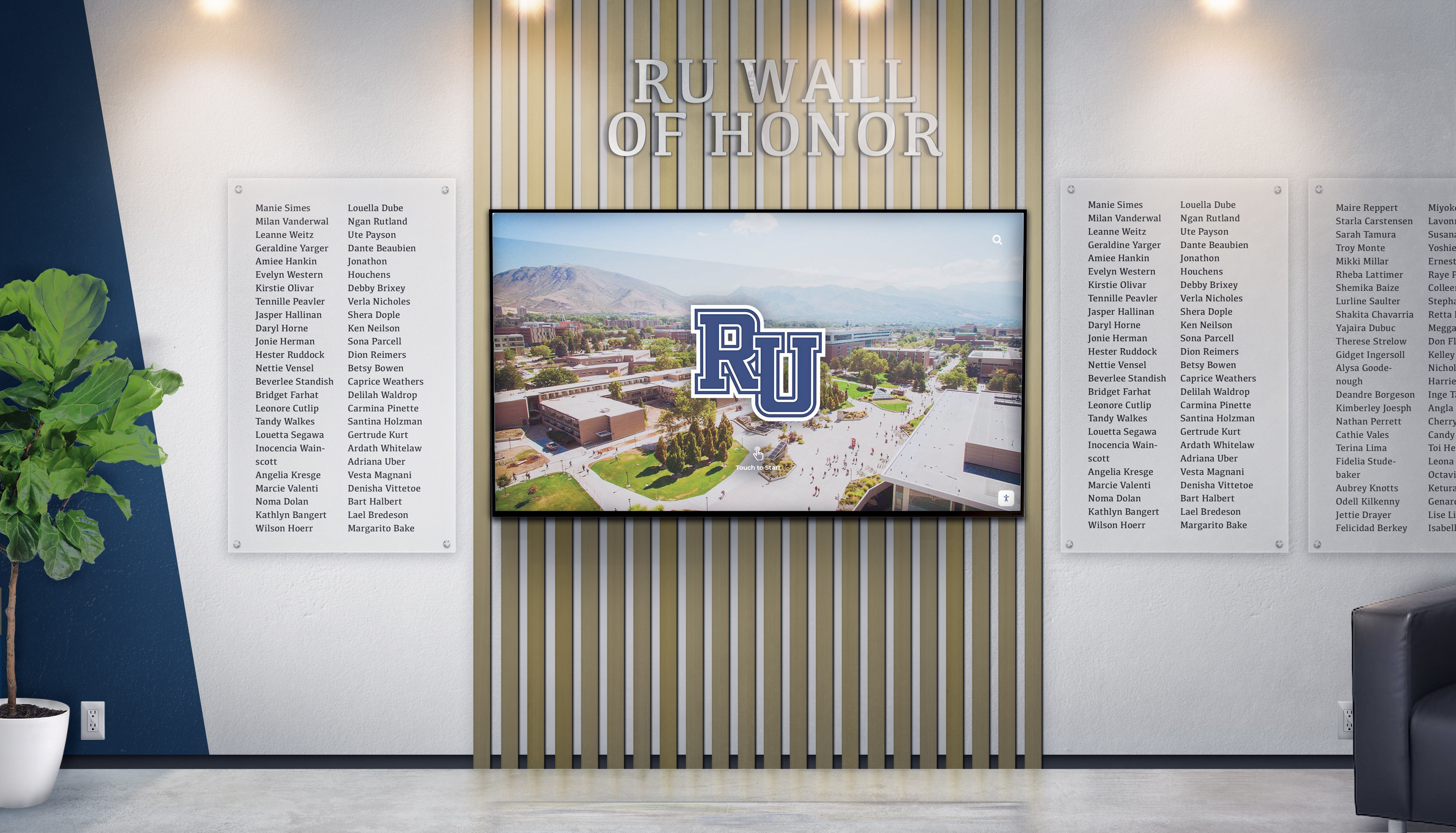
Art Ross, already legendary in hockey circles as both a player and innovator, was hired as general manager and coach. Ross would prove instrumental in establishing Bruins culture, building competitive rosters, and developing the strategic approaches that defined early franchise success. His influence extended beyond Boston—Ross designed the puck used in NHL games and created the Art Ross Trophy awarded annually to the league’s leading scorer.
The First American NHL Team
When the Bruins took the ice for their first game on December 1, 1924, they represented more than just another hockey team—they embodied the NHL’s ambitions to establish professional hockey as a viable entertainment option in American markets. The Bruins played their first season at Boston Arena before moving to the newly constructed Boston Garden in 1928, a venue that would become legendary in hockey lore.
The early seasons proved challenging as the Bruins worked to establish competitive rosters while introducing hockey to Boston audiences. However, success came quickly. By their third season, the Bruins had assembled a talented roster capable of competing with established Canadian franchises.
The First Stanley Cup: 1929
The Bruins’ breakthrough came remarkably quickly. In the 1928-29 season, just their fifth year of existence, the Bruins captured their first Stanley Cup championship. The team dominated the regular season with a 26-13-5 record, then swept the New York Rangers in the Finals to claim hockey’s ultimate prize.
This championship validated Adams’ vision and Art Ross’ team-building approach. The Bruins had proven that American teams could compete at hockey’s highest level, paving the way for the NHL’s continued expansion into American markets throughout the following decades.
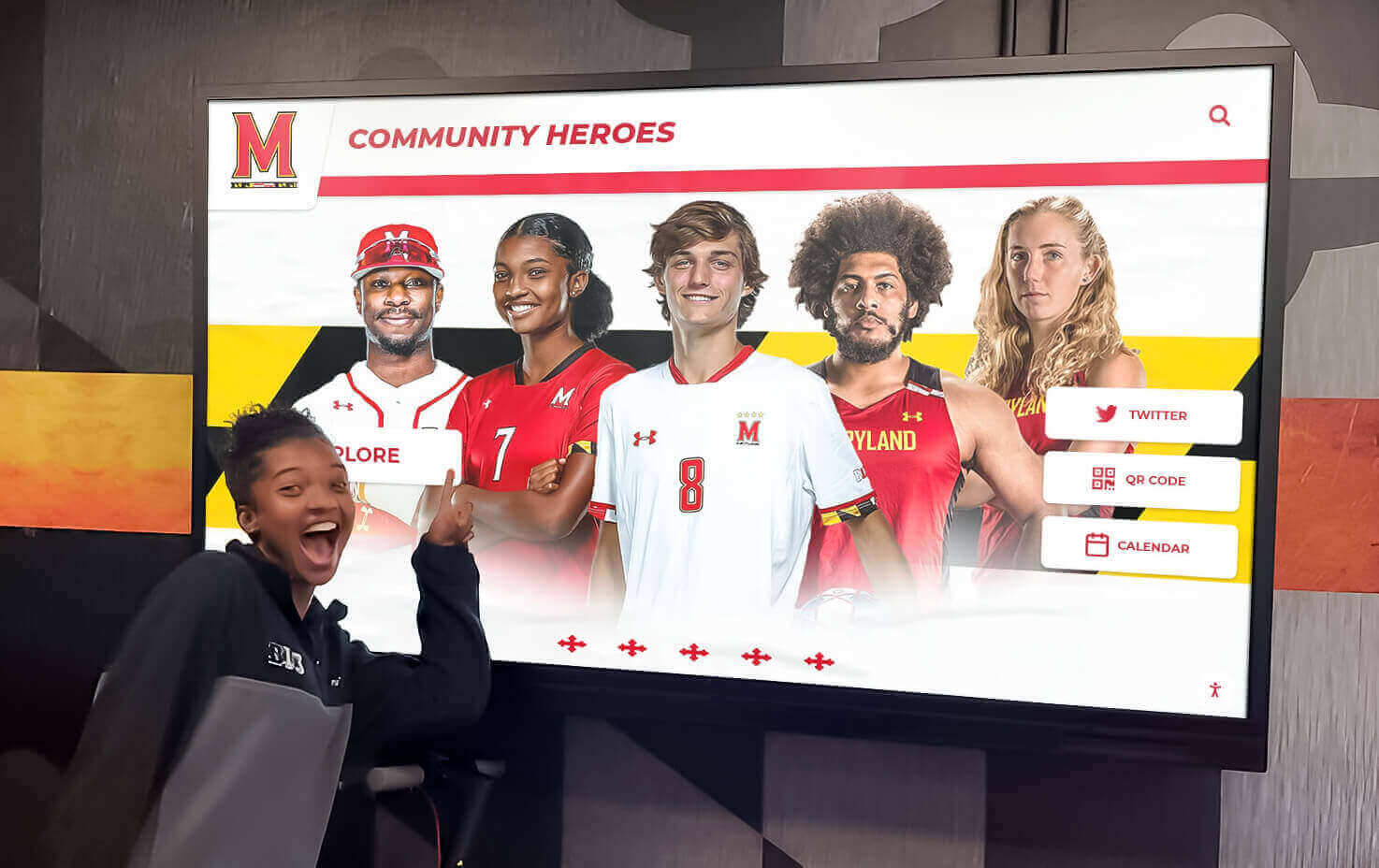
The 1929 championship established traditions and expectations that would define Bruins culture for generations. Boston fans embraced hockey with the same passion they showed for baseball and other sports, creating the fervent support that would sustain the franchise through nearly a century of competition.
The Early Decades: Building Tradition
Following their first championship, the Bruins established themselves as perennial contenders while developing the traditions and rivalries that would define their identity.
The 1939 and 1941 Championships
The Bruins captured two additional Stanley Cup championships in the late 1930s and early 1940s, cementing their status among hockey’s elite franchises. The 1938-39 team featured the famous “Kraut Line” of Milt Schmidt, Woody Dumart, and Bobby Bauer—three players of German descent whose nickname, while common at the time, reflected the era’s cultural attitudes.
The Kraut Line exemplified the combination of skill, toughness, and chemistry that characterized successful Bruins teams. Schmidt would later serve as Bruins coach and general manager, maintaining connections between championship eras and ensuring institutional knowledge transferred across generations.
The 1940-41 championship team swept the Detroit Red Wings in the Finals, demonstrating dominance that reinforced the Bruins’ reputation as one of hockey’s most formidable franchises. These early championships established winning traditions that would sustain fan expectations even during leaner periods.
The Original Six Era
From 1942 through 1967, the NHL consisted of just six teams—the Bruins, Montreal Canadiens, Toronto Maple Leafs, Detroit Red Wings, Chicago Blackhawks, and New York Rangers. This Original Six era created intense familiarity as teams played each other multiple times each season, developing fierce rivalries and memorable playoff confrontations.

The Bruins struggled through much of the Original Six era, missing the playoffs consistently through the 1950s and early 1960s. However, this difficult period set the stage for the franchise’s greatest era, as high draft positions enabled the team to select transformational talent that would revolutionize both the franchise and the sport itself.
The Bobby Orr Era: Redefining Hockey Excellence
No player transformed the Bruins—or hockey itself—more profoundly than Bobby Orr, whose arrival in Boston marked the beginning of the franchise’s most successful and celebrated period.
The Arrival of Number Four
The Bruins selected Bobby Orr with the fourth overall pick in the 1966 NHL Draft, though they had been tracking the phenomenal young defenseman for years. Orr made his NHL debut as an 18-year-old in the 1966-67 season and immediately demonstrated abilities that would rewrite assumptions about what defensemen could accomplish.
Before Orr, defensemen were expected to focus primarily on defensive responsibilities, occasionally contributing offensively but never dominating games through offensive creativity. Orr shattered these limitations, using explosive skating speed, exceptional vision, and remarkable puck-handling skills to control games from the blue line. He didn’t just support offensive attacks—he led them, rushing the puck up ice and creating scoring opportunities that revolutionized hockey strategy.
Orr won the Calder Trophy as rookie of the year in his first season, beginning a remarkable run of individual honors that would include eight consecutive Norris Trophy wins as the league’s best defenseman and three consecutive Hart Trophy awards as league MVP—unprecedented achievements for a defenseman.
The 1970 Stanley Cup: “The Goal”
The 1969-70 season culminated in one of hockey’s most iconic moments. The Bruins swept the St. Louis Blues in the Stanley Cup Finals, with Orr scoring the championship-clinching goal in overtime of Game 4. Glenn Hall’s tripping penalty sent Orr flying through the air as the puck crossed the goal line, and photographer Ray Lussier captured the moment in an image that has become synonymous with hockey excellence.

“The Goal” represents more than just a championship moment—it symbolizes Orr’s revolutionary impact on hockey and the joy his playing style brought to fans. The image appears in countless recognition displays, memorabilia collections, and hockey halls of fame worldwide, forever capturing the moment when one player’s brilliance delivered championship glory.
The Big Bad Bruins
The championship teams of the early 1970s became known as the “Big Bad Bruins” for their combination of skill and physical toughness. While Orr provided transcendent skill, teammates like Phil Esposito, John Bucyk, Wayne Cashman, and Ken Hodge contributed scoring punch, and enforcers like Wayne Cashman, Terry O’Reilly, and others ensured opponents paid physical prices for competing against Boston.
This combination of finesse and toughness created a dominant team that captured another Stanley Cup in 1972, defeating the New York Rangers in six games. The Big Bad Bruins established an identity that Boston fans embraced—skilled hockey played with an edge, where talent was protected by toughness and victories were earned through both artistry and determination.
Orr’s Lasting Impact
Bobby Orr’s career was tragically shortened by chronic knee injuries, leading to his retirement in 1978 at just 30 years old. However, his impact on hockey and the Bruins transcends his playing career. Orr redefined what defensemen could accomplish, inspiring future generations like Paul Coffey, Al MacInnis, and later players who understood that blue liners could drive offensive success.
For the Bruins, Orr represents the highest standard of excellence and the pinnacle of individual brilliance serving team success. His number 4 was retired by the franchise, and his legacy informs how the organization evaluates talent, develops players, and pursues championship aspirations. Recognition programs celebrating hockey history invariably feature Orr’s achievements prominently, acknowledging his transformational impact on the sport.
The Ray Bourque Era: Sustained Excellence
Following Orr’s departure, the Bruins struggled to replicate championship success, but they discovered another generational defenseman who would define the next phase of franchise history.
The Arrival of Ray Bourque
The Bruins selected Ray Bourque with the eighth overall pick in the 1979 NHL Draft, hoping he could help fill the enormous void left by Orr’s retirement. Bourque immediately demonstrated exceptional abilities, winning the Calder Trophy as rookie of the year and establishing himself among hockey’s elite defensemen.
Unlike Orr’s revolutionary offensive brilliance, Bourque excelled through consistent all-around play, combining defensive responsibility with offensive contributions. He developed into the most reliable defenseman in hockey, playing enormous minutes, leading by example, and delivering excellence year after year across more than two decades.
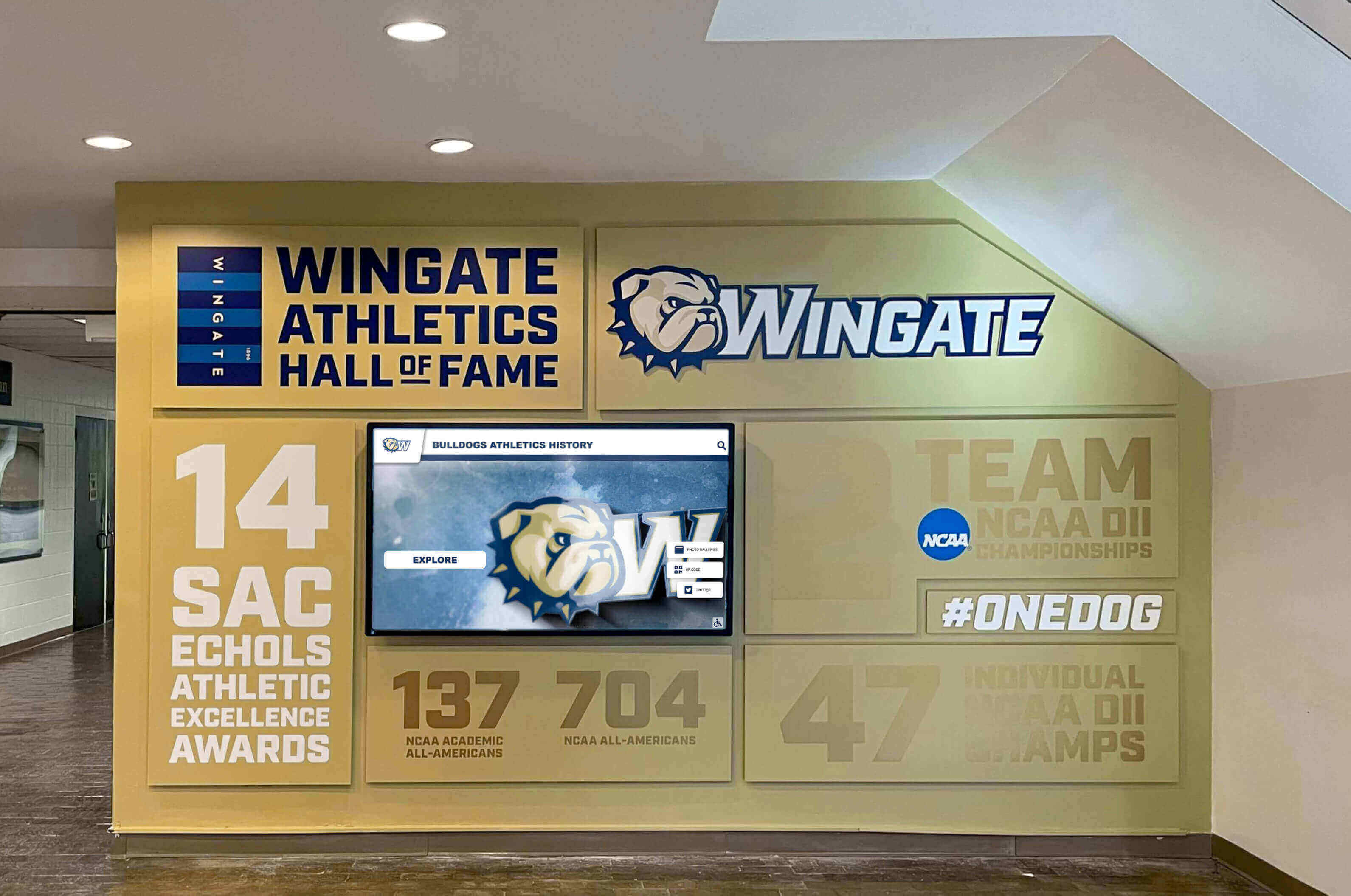
Bourque won five Norris Trophies as the NHL’s best defenseman and was named to the All-Star First Team an incredible 13 times. His longevity and consistency established him among hockey’s greatest players regardless of position, and he remains the highest-scoring defenseman in NHL history among players who spent their entire careers primarily with one franchise.
The Cam Neely Era
During Bourque’s tenure, the Bruins featured other exceptional players who contributed to team success and captured fan affection. Cam Neely exemplified the power forward position, combining goal-scoring ability with physical play that punished opposing defensemen. Neely scored 50 goals three times despite chronic injuries that ultimately shortened his career.
Players like Adam Oates provided exceptional playmaking, while goaltenders including Reggie Lemelin and Andy Moog gave the Bruins solid netminding. The Bruins remained competitive throughout the 1980s and early 1990s, making deep playoff runs including Stanley Cup Finals appearances in 1988 and 1990, though championship success remained elusive.
The Quest for Another Cup
The inability to capture another Stanley Cup during Bourque’s remarkable career became one of hockey’s most poignant storylines. Bourque exemplified professionalism and excellence, yet championship success eluded him despite two decades of brilliance. This reality created complicated emotions for Bruins fans who appreciated Bourque’s greatness while lamenting the franchise’s inability to surround him with sufficient supporting talent to capture another championship.
In 2000, recognizing that his championship window had closed in Boston, Bourque requested a trade. The Bruins honored his request, sending him to the Colorado Avalanche where he finally captured the Stanley Cup in 2001 during his final NHL season. Bruins fans celebrated Bourque’s long-awaited championship, demonstrating the deep affection and respect the hockey community held for his character and career.
The Modern Era: Return to Glory
After years of rebuilding following Bourque’s departure, the Bruins rediscovered championship success in the 21st century through smart management, player development, and the combination of skill and toughness that has always characterized great Bruins teams.
Building Through the Draft
The Bruins’ return to elite status began with smart drafting and player development. Patrice Bergeron, selected 45th overall in 2003, developed into one of hockey’s most complete two-way centers, winning the Selke Trophy as the league’s best defensive forward four times. His leadership, defensive excellence, and offensive contributions anchored Bruins success for nearly two decades.

Brad Marchand, a 71st overall pick in 2006, exceeded expectations by developing into a top-line winger combining goal-scoring ability with the agitating style that frustrated opponents. David Krejci provided exceptional playmaking ability down the middle. The Bruins complemented these draft successes with strategic acquisitions and veteran leadership that created championship-caliber rosters.
The 2011 Stanley Cup Championship
The Bruins’ championship drought ended in spectacular fashion during the 2010-11 season. After finishing second in the Northeast Division, the Bruins embarked on a memorable playoff run characterized by resilience, defensive excellence, and timely scoring.
The Bruins defeated the Montreal Canadiens, Philadelphia Flyers, and Tampa Bay Lightning to reach the Stanley Cup Finals against the Vancouver Canucks. The Finals proved intense, with the series requiring seven games to determine a champion. The Bruins fell behind 2-0 and 3-2 in the series before winning Game 6 in Vancouver and then dominating Game 7 at home, winning 4-0 to capture their first championship since 1972.
Tim Thomas delivered exceptional goaltending throughout the playoffs, winning the Conn Smythe Trophy as playoff MVP. The championship validated years of patient team building and delivered joy to Bruins fans who had waited 39 years to celebrate another title.
Continued Contention
Following the 2011 championship, the Bruins remained among the NHL’s elite teams, consistently making deep playoff runs and remaining championship contenders. They reached the Stanley Cup Finals again in 2013, ultimately falling to the Chicago Blackhawks in six games, with Chicago scoring twice in 17 seconds late in Game 6 to complete a dramatic comeback.
The Bruins reached the Finals once more in 2019, losing to the St. Louis Blues in seven games. These near-misses demonstrated the franchise’s sustained excellence while reinforcing how difficult capturing championships proves even for elite teams.

Throughout the 2010s and into the 2020s, players like Zdeno Chara, David Pastrnak, Tuukka Rask, and others continued Bruins traditions of excellence. The franchise maintained its identity as a team that combined skill with toughness, played strong defensive hockey, and competed with intensity that honored franchise history.
Legendary Bruins Players and Recognition
Throughout nearly a century of competition, the Bruins have featured numerous players whose achievements deserve recognition and celebration through various programs.
Retired Numbers
The Bruins have retired several numbers honoring the franchise’s greatest players. Number 2 for Eddie Shore, one of the game’s first superstars who won four Hart Trophies as league MVP. Number 3 for Lionel Hitchman, a defensive stalwart from the franchise’s early years. Number 4 for Bobby Orr, whose revolutionary play transformed hockey. Number 5 for Dit Clapper, who spent his entire 20-year career with the Bruins. Number 7 for Phil Esposito, who set scoring records during the Big Bad Bruins era. Number 9 for Johnny Bucyk, who spent 21 seasons in Boston and remained beloved by fans decades after retirement.
Number 15 for Milt Schmidt, who excelled as both player and executive. Number 24 for Terry O’Reilly, who embodied the grit and determination that characterized great Bruins teams. Number 77 for Ray Bourque, whose excellence spanned more than two decades. And number 99 was retired league-wide honoring Wayne Gretzky.
These retired numbers create visual reminders throughout TD Garden of the standards established by franchise legends, inspiring current players while honoring those who built Bruins traditions.
The Hockey Hall of Fame
Numerous Bruins have been inducted into the Hockey Hall of Fame in Toronto, hockey’s ultimate individual honor. Beyond the obvious selections like Orr and Bourque, players including Eddie Shore, Dit Clapper, Milt Schmidt, Phil Esposito, Cam Neely, and many others have received this prestigious recognition.

These Hall of Fame selections validate the exceptional talent that has worn Bruins jerseys and demonstrate the franchise’s consistent ability to attract and develop elite players across multiple eras. Digital recognition solutions enable organizations to celebrate these achievements comprehensively, providing rich multimedia content that brings legendary careers to life for current and future fans.
Iconic Rivalries
The Bruins’ history has been shaped significantly by fierce rivalries that have produced countless memorable moments and playoff confrontations.
Bruins vs. Canadiens
No rivalry in hockey—and perhaps in all professional sports—matches the intensity and history of Bruins-Canadiens competition. The two Original Six franchises have met 34 times in the playoffs, producing dramatic series and unforgettable moments that define both franchises’ histories.
The rivalry encompasses cultural dimensions beyond hockey competition, representing linguistic, cultural, and regional differences between English-speaking Boston and French-speaking Montreal. Games between these franchises carry weight and emotion that transcend regular season or playoff positioning, engaging passionate fan bases in ways few sporting rivalries achieve.
Other Notable Rivalries
The Bruins have developed significant rivalries with other franchises including the Toronto Maple Leafs (another Original Six matchup), the Philadelphia Flyers (particularly during the physical 1970s), the New York Rangers (intensified during the 1970s and again in the 2010s), and more recent playoff-driven rivalries with teams like the Tampa Bay Lightning.

These rivalries create narrative depth that enhances fan engagement and provides context for understanding franchise history. Recognition programs celebrating team history often feature rivalry content, documenting significant games, series outcomes, and memorable moments that define competitive relationships.
TD Garden: The Modern Home of Bruins Hockey
The Bruins called Boston Garden home from 1928 through 1995, creating countless memories in the legendary venue known for its unique features including obstructed view seats, lack of air conditioning, and electric atmosphere during big games.
Transition to TD Garden
In 1995, the Bruins moved to what was originally named FleetCenter (later TD Garden), a modern facility located adjacent to the old Boston Garden site. The new arena provided contemporary amenities while working to preserve traditions and atmosphere from the beloved original venue.
TD Garden features modern recognition displays celebrating franchise history, including retired number displays, championship banners, and various exhibits honoring legendary players and memorable moments. The arena also incorporates the Sports Museum of New England, which features extensive hockey exhibits including Bruins-specific content.
Digital Recognition in Modern Arenas
Modern sports facilities increasingly implement digital recognition systems that enhance visitor experiences while preserving franchise history. Interactive displays allow fans to explore player statistics, watch historical highlights, and learn about franchise milestones through engaging touchscreen interfaces.
Solutions like Rocket Alumni Solutions provide platforms specifically designed for sports recognition applications, enabling teams to create comprehensive digital archives that celebrate history while engaging fans through modern technology. These systems prove particularly valuable for showcasing extensive histories like the Bruins’, where nearly a century of achievement creates more content than traditional static displays can effectively present.

Celebrating Hockey Excellence Through Recognition Programs
Organizations across hockey—from professional teams to youth programs—implement recognition systems that honor achievement and preserve tradition.
The Value of Recognition
Recognition programs serve multiple important purposes including preserving institutional history across generations, inspiring current players through examples of past excellence, strengthening alumni connections and fan engagement, supporting fundraising and development initiatives, and enhancing facility experiences for visitors and recruits.
For hockey organizations at any level, recognition programs create tangible connections between past achievement and current aspirations. Digital recognition platforms make sophisticated recognition accessible to organizations regardless of size or budget.
Features of Effective Recognition Systems
Effective hockey recognition programs include comprehensive player profiles with statistics, achievements, and career narratives, multimedia content including photos, videos, and audio interviews, searchable databases enabling visitors to find specific players or teams, championship and season documentation celebrating collective success, and integration with broader facility experiences.
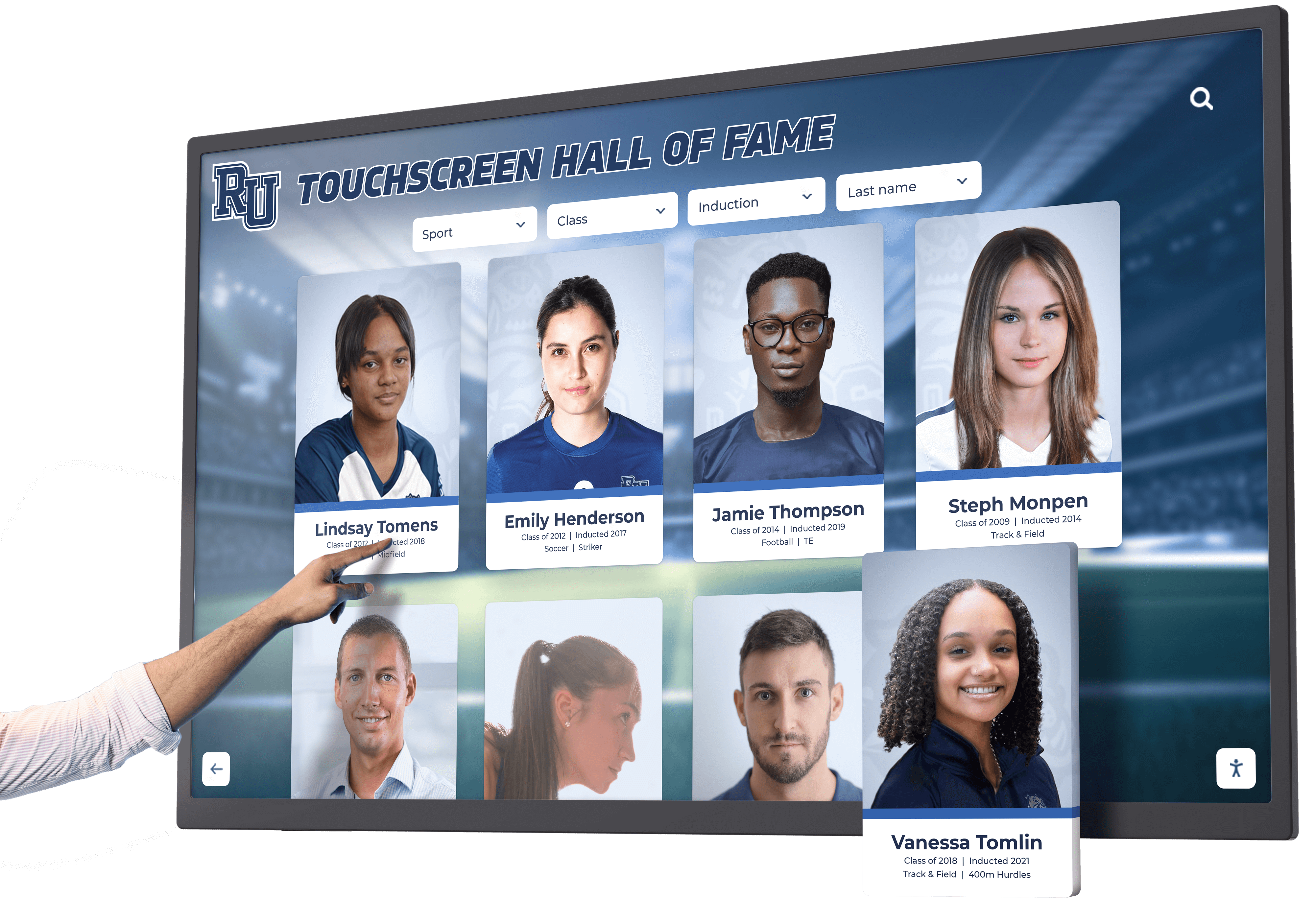
Modern digital systems eliminate space constraints that limit traditional trophy cases and plaques, enabling unlimited recognition capacity that ensures every deserving player and team receives appropriate celebration. This proves particularly valuable for programs with extensive histories like the Bruins, where decades of achievement create vast recognition opportunities.
Implementation Considerations
Organizations implementing recognition programs should consider program scope and objectives, selection criteria ensuring fair and transparent processes, content development including research, writing, and multimedia creation, display location and visibility, budget implications including both initial investment and ongoing management, and technology selection between traditional physical displays, modern digital systems, or hybrid approaches.
Many organizations find that digital recognition solutions provide optimal combinations of functionality, flexibility, and value, enabling comprehensive recognition programs that serve multiple audiences while accommodating easy updates as new achievements occur.
The Bruins’ Cultural Impact
Beyond wins and championships, the Bruins have impacted Boston culture and New England identity in profound ways.
Regional Identity
The Bruins represent more than just a hockey team—they embody aspects of New England culture including toughness, resilience, blue-collar values, and passionate loyalty. The franchise’s success during different eras has provided shared experiences that connect generations of fans across the region.
During the Bobby Orr era, the Bruins captured imaginations and introduced countless New Englanders to hockey’s excitement. Orr’s brilliance created lifelong fans who passed their passion to children and grandchildren, expanding hockey’s cultural footprint throughout the region.
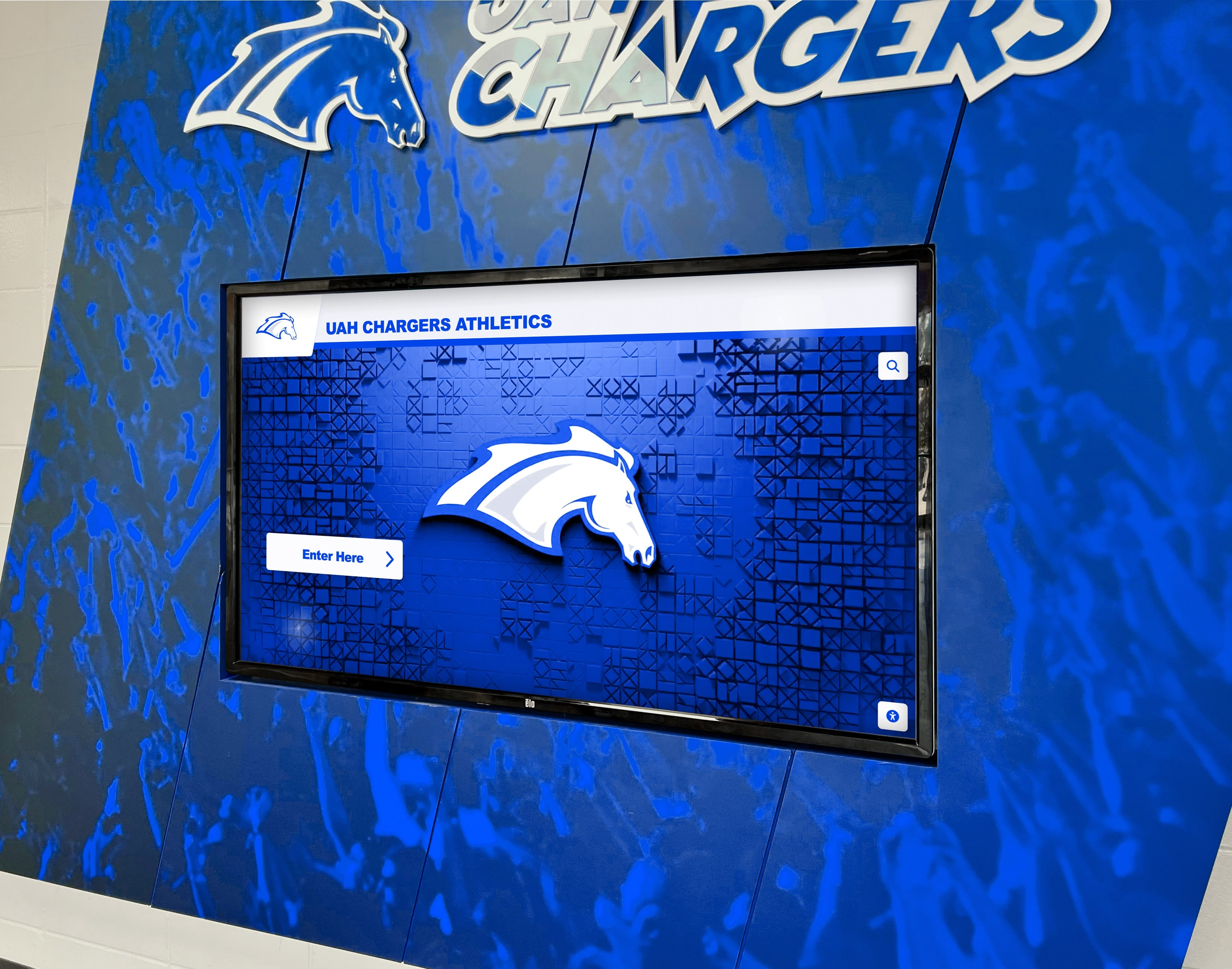
Inspiring Future Generations
The Bruins’ success has inspired generations of young hockey players throughout New England. Youth hockey participation exploded during the Big Bad Bruins era and again following the 2011 championship, demonstrating how professional success influences grassroots development.
Recognition programs at youth and high school levels often feature content about local players who reached professional levels, creating tangible pathways that inspire current participants. These programs demonstrate how recognition extends beyond celebrating past achievement to motivating future excellence.
Conclusion: Nearly a Century of Excellence
The Boston Bruins’ history encompasses nearly 100 years of professional hockey, from their founding as the NHL’s first American franchise through six Stanley Cup championships, legendary players who transformed the sport, and sustained excellence across multiple eras. The franchise has contributed profoundly to hockey’s evolution while creating traditions and memories that resonate throughout New England and beyond.
From Bobby Orr’s revolutionary brilliance to Ray Bourque’s sustained excellence, from the Big Bad Bruins to modern championship contenders, the franchise demonstrates how organizational commitment to excellence, smart management, and respect for tradition create sustained success. The retired numbers hanging in TD Garden, the players enshrined in the Hockey Hall of Fame, and the championship banners tell stories of individual brilliance and collective achievement.

For organizations seeking to celebrate hockey excellence and preserve tradition, modern recognition technology provides powerful tools for creating engaging experiences that honor achievement while inspiring future generations. Whether commemorating professional legends, celebrating college or high school accomplishments, or recognizing youth program success, digital solutions enable comprehensive recognition programs that serve multiple audiences and objectives.
Ready to explore how digital recognition systems can help your organization celebrate hockey excellence? From interactive touchscreen displays showcasing player achievements to comprehensive online platforms accessible worldwide, modern solutions provide practical approaches for preserving tradition, engaging fans and alumni, and inspiring current and future players through examples of sustained excellence.



































